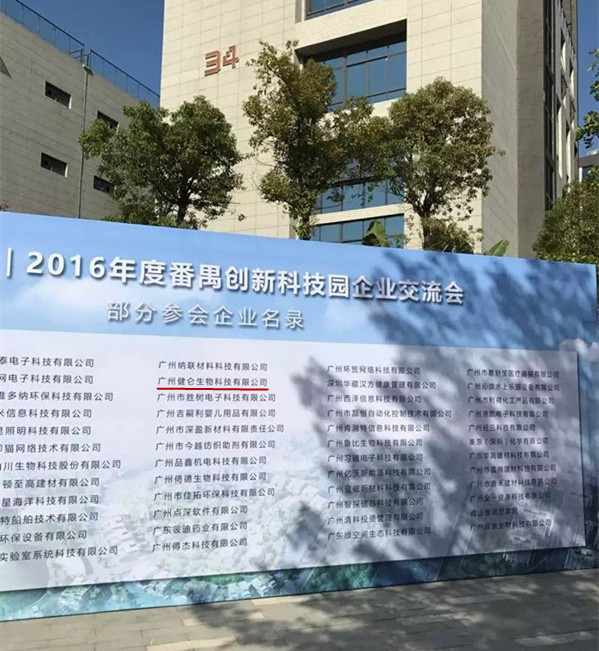- 產(chǎn)品描述
Toxocara canis弓首線蟲ELISA法診斷試劑盒
廣州健侖生物科技有限公司
廣州健侖長期供應(yīng)各種生物原料,主要代理品牌:美國Seracare、西班牙Certest、美國Fuller、美國NOVABIOS、 Cellabs等等。
Cellabs公司是一個(gè)的生物技術(shù)公司,總部位于澳大利亞悉尼。專門研發(fā)與生產(chǎn)針對(duì)熱帶傳染性疾病的免疫診斷試劑盒。其產(chǎn)品40多個(gè)國家和地區(qū)。1998年,Cellabs收購TropBio公司,進(jìn)一步鞏固其在研制熱帶傳染病、寄生蟲診斷試劑方面的位置。
Toxocara canis弓首線蟲ELISA法診斷試劑盒
該公司的Crypto/Giardia Cel IFA是國標(biāo)*推薦的兩蟲檢測IFA染色試劑、Crypto Cel Antibody Reagent是UK DWI水質(zhì)安全評(píng)估檢測的*抗體。
【Cellabs公司產(chǎn)品介紹】
公司的主要產(chǎn)品有:隱孢子蟲診斷試劑,賈第蟲診斷試劑,瘧疾診斷試劑,衣原體檢測試劑,絲蟲診斷試劑,錐蟲診斷試劑等。Cellabs 的瘧疾ELISA試劑盒成為臨床上的一個(gè)重要的診斷工具盒科研上的重要鑒定工具。其瘧疾抗原HRP-2 ELISA檢測試劑盒和瘧疾抗體ELISA檢測試劑盒已經(jīng)成為醫(yī)學(xué)研究所的*試劑盒。Cellabs產(chǎn)品主要包括以下幾種方法學(xué):直接(DFA)和間接(IFA)免疫熒光法,酶聯(lián)免疫吸附試驗(yàn)(ELISA),和膠體金快速測試。所有產(chǎn)品都是按照GMP、CE標(biāo)志按照ISO13485。
主要產(chǎn)品包括:隱孢子蟲診斷試劑,賈第蟲診斷試劑,瘧疾診斷試劑,衣原體檢測試劑,絲蟲診斷試劑,錐蟲診斷試劑等。
廣州健侖生物科技有限公司與cellabs達(dá)成代理協(xié)議,歡迎廣大用戶咨詢訂購。
Toxocara canis弓首線蟲ELISA法診斷試劑盒我司還提供其它進(jìn)口或國產(chǎn)試劑盒:登革熱、瘧疾、流感、A鏈球菌、合胞病毒、腮病毒、乙腦、寨卡、黃熱病、基孔肯雅熱、克錐蟲病、違禁品濫用、肺炎球菌、軍團(tuán)菌、化妝品檢測、食品安全檢測等試劑盒以及日本生研細(xì)菌分型診斷血清、德國SiFin診斷血清、丹麥SSI診斷血清等產(chǎn)品。
歡迎咨詢
歡迎咨詢2042552662
【Seracare產(chǎn)品介紹】
貨號(hào) | 產(chǎn)品名稱 | 產(chǎn)品描述 | 規(guī)格 | |
免疫熒光試劑盒(IFA kit) | ||||
KR1 | Crypto Cel | 隱孢子蟲(Cryptosporidium)間接免疫熒光檢測試劑 | 50 Test | |
KR2 | Crypto/Giardia Cel | 隱孢子蟲&賈第蟲(Cryptosporidium & Giardia)間接免疫熒光檢測試劑 | 50 Test | |
KG1 | Giardia Cel | 賈第蟲(Giardia)間接免疫熒光檢測試劑 | 50 Test | |
KC1 | Chlamydia Cel | 沙眼衣原體(Chlamydia trachomatis)間接免疫熒光檢測試劑 | 50 Test | |
KC2 | Chlamydia Cel LPS | 衣原體 lipopolysaccharide (LPS)間接免疫熒光檢測試劑 | 50 Test | |
KC3 | Chlamydia Cel Pn | 肺炎衣原體(Chlamydia pneumoniae)間接免疫熒光檢測試劑 | 50 Test | |
KP1 | Pneumo Cel | 卡氏肺孢子蟲(Pneumocystis carinii)間接免疫熒光檢測試劑 | 50 Test | |
KP2 | Pneumo Cel Indirect | 卡氏肺孢子蟲( Pneumocystis carinii)間接免疫熒光檢測試劑 | 50 Test | |
酶免試劑盒 ELISA kit | ||||
KG2 | Giardia CELISA | 賈第蟲(Giardia)ELISA kit | 96 Test | |
KE1 | Entamoeba CELISA Path | 溶組織內(nèi)阿米巴(Entamoeba histolytica) ELISA kit | 96 Test | |
KF1 & KF2 | Filariasis CELISA | 班氏絲蟲(Wuchereria bancrofti ) ELISA kit |
| |
KM2 | Malaria Antigen (HRP2) CELISA | 惡性瘧原蟲(Plasmodium falciparum) 抗原 ELISA kit | 192 Test | |
KMC3 | Pan Malaria Antibody CELISA | 間日、三日、惡性及卵形瘧疾(Malaria)ELISA IgG kit | 192 Test | |
KT2 | T. cruzi IgG CELISA | 克氏錐蟲(Trypanosoma cruzi) ELISA IgG kit | 192 Test | |
KT3 | Toxocara IgG CELISA | 弓首線蟲(Toxocara canis) ELISA IgG kit | 192 Test | |
KF3 | Filariasis Ab (Bm14) CELISA | 淋巴絲蟲病(lymphatic filariasis) ELISA IgG kit | 480 Test | |
KM7 | Quantimal™ pLDH Malaria CELISA | 瘧疾pLDH抗體檢測 ELISA kit | 96 Test | |
二維碼掃一掃
【公司名稱】 廣州健侖生物科技有限公司
【】 楊永漢
【】
【騰訊 】 2042552662
【公司地址】 廣州清華科技園創(chuàng)新基地番禺石樓鎮(zhèn)創(chuàng)啟路63號(hào)二期2幢101-3室
【企業(yè)文化】



呼吸中樞 (respiratory center)是指中樞神經(jīng)系統(tǒng)內(nèi)產(chǎn)生呼吸節(jié)律和調(diào)節(jié)呼 吸運(yùn)動(dòng)的神經(jīng)細(xì)胞。在對(duì)呼吸中樞定位研究的諸多實(shí)驗(yàn)中,具有重要 價(jià)值的是1923年由英國的生理學(xué)家拉姆斯登(Lumsden)對(duì)貓的腦干 進(jìn)行的分段橫切實(shí)驗(yàn)。呼吸中樞分布在大腦皮層、間腦、腦橋、延髓 和脊髓等各級(jí)部位,參與呼吸節(jié)律的產(chǎn)生和調(diào)節(jié),共同實(shí)現(xiàn)機(jī)體的正 常呼吸運(yùn)動(dòng)。延髓呼吸中樞具有內(nèi)在節(jié)律活動(dòng),在整體內(nèi),吸氣神經(jīng) 元能發(fā)放陣發(fā)性的成簇電位,每分鐘12~15次,與呼吸頻率相似,而呼 氣神經(jīng)元無自發(fā)性放電。如果在貓的延髓與脊髓之間橫斷脊髓,其自 主節(jié)律性呼吸立即停止且不能恢復(fù),提示脊髓不能產(chǎn)生自動(dòng)的節(jié)律性 呼吸。但支配呼吸肌的下運(yùn)動(dòng)神經(jīng)元位于脊髓,說明脊髓是腦和 呼吸肌的中繼站以及整合某些呼吸反射的初級(jí)中樞。[1] 脊髓頸、胸 節(jié)段灰質(zhì)前角有呼吸運(yùn)動(dòng)神經(jīng)元。頸3~5節(jié)有支配膈肌的神經(jīng)元。脊髓 胸段2~6節(jié)有支配肋間肌的運(yùn)動(dòng)神經(jīng)元。如把脊髓在胸段第6節(jié)以下橫 斷,對(duì)呼吸運(yùn)動(dòng)將不發(fā)生任何妨礙。如把脊髓在頸段第6節(jié)以下橫斷, 肋間肌雖已失去作用,但膈肌還能照常進(jìn)行有節(jié)律收縮活動(dòng);只有把 脊髓在頸段第2節(jié)水平切斷,呼吸肌由于與延髓中樞分離而不再起作用 。延髓中有產(chǎn)生節(jié)律性呼吸的基本中樞,兩部位有部分重在腦干不同 平面橫切時(shí)引起的呼吸變化在腦干不同平面橫切時(shí)引起的呼吸變化疊 ,如刺激呼氣中樞,引起持續(xù)呼氣動(dòng)作;刺激吸氣中樞,引起持續(xù)吸 氣動(dòng)作;交替刺激兩個(gè)部位,可引起相應(yīng)呼氣和吸氣交替出現(xiàn)。吸氣 中樞更敏感。其中樞神經(jīng)細(xì)胞,一為背側(cè),包括附近的孤束核,為吸 氣神經(jīng)元,自動(dòng)發(fā)出沖動(dòng),作用于脊髓對(duì)側(cè)的膈肌運(yùn)動(dòng)神經(jīng)元,從而 引起對(duì)側(cè)膈肌收縮,又作用于腹外側(cè)疑核,通過迷走神經(jīng)和舌咽神經(jīng) 支配同側(cè)呼吸輔助肌,后疑核支配肋間肌運(yùn)動(dòng)神經(jīng)元。延髓中樞與脊 髓之間具交互抑制現(xiàn)象。延髓的吸氣神經(jīng)元可通過下行路徑引起脊髓 吸氣肌運(yùn)動(dòng)神經(jīng)元興奮,同時(shí)又有側(cè)支通過抑制性中間神經(jīng)元對(duì)脊髓 呼氣肌運(yùn)動(dòng)神經(jīng)元起抑制作用。
Respiratory center refers to the nerve cells in the central nervous system that produce respiratory rhythms and regulate respiratory movements. Among the many experiments on the positioning of respiratory centers, it was of great importance in 1923 that the British physiologist Lumsden conducted a segmental cross-cut experiment on the cat's brainstem. The respiratory center is distributed in various parts of the cerebral cortex, diencephalon, pons, medulla, and spinal cord. It participates in the generation and regulation of respiratory rhythm and achieves the normal respiratory movement of the body. The medullary respiratory center has intrinsic rhythmic activity. In the whole, the inspiratory neurons can deliver paroxysmal clustering potentials 12 to 15 times per minute, similar to the respiratory rate, and the expiratory neurons do not have spontaneous discharge. If the spinal cord is tran- sected between the medulla oblongata and the spinal cord of the cat, its spontaneous rhythmic breathing stops immediay and cannot be recovered, suggesting that the spinal cord cannot produce automatic rhythmic breathing. However, the lower motor neurons that dominate the respiratory muscles are located in the spinal cord, indicating that the spinal cord is a relay station that connects the brain and respiratory muscles and a primary center that integrates certain respiratory reflexes. [1] There are respiratory motor neurons in the anterior horn of the cervical spine and thoracic segments. Neck 3 to 5 have neurons that dominate the diaphragm. The thoracic segments 2-6 have motoneurons that dominate the intercostal muscles. If the spinal cord is transection below section 6 of the thoracic segment, there will be no hindrance to respiratory motion. If the spinal cord is transected below the sixth segment of the cervical septum, although the intercostal muscle has lost its function, the diaphragm muscle can perform rhythmic contraction as usual; only when the spinal cord is cut at the level of the second cervical segment, the respiratory muscle is separated from the medulla oblongata It no longer works. In the medulla oblongata, there is a basic center of rhythmic breathing, and some parts of the medulla produce a rhythmic respiration, and some of the two parts are heavy in the breathing changes caused when the brainstem is cut in different planes, and the breathing changes caused when the brainstem is cut in different planes, such as stimulation of the exhalation center, causing continuation Exhale movements; stimulating the inspiratory center, causing continuous inhalation; alternay stimulating two sites, can cause the corresponding exhalation and inhalation to appear alternay. Inhalation centers are more sensitive. The central nerve cells, one is dorsal, including the nearby nucleus of solitary tract, are inspiratory neurons, automatically emit impulses, act on the diaphragm muscle motor neurons on the contralateral side of the spinal cord, causing contraction of the contralateral diaphragm, but also on the ventrolateral Suspected nucleus, the vagus nerve and glossopharyngeal nerve innervate the ipsilateral respiratory accessory muscle, and the postnucleus suspects the intercostal muscle motor neurons. There is an interaction between the medulla oblongata and the spinal cord. The inspiratory neurons of the medulla oblongata can cause excitation of spinal inspiratory muscle motor neurons through the descending pathway, and at the same time, there are collaterals inhibiting the spinal expansive motor neurons through inhibitory interneurons.



